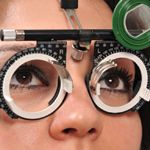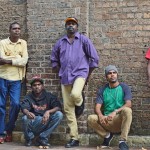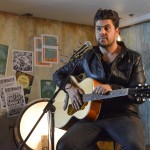
Deadly Vibe recently spoke with the coordinator of the most recent ‘eye blitz’ in Australia, Angus Thornton, to find out why more people are putting their hand up for these life-changing operations.
“When a prominent member of the community returns from surgery and people can see the effect it has had on them – that’s quite a powerful thing,” says Angus. “Improving someone’s sight significantly is a big deal. That’s why we’re beginning a project called ‘surgery champions’ where we will be looking for people to take on that role. We’ll be employing them to actively promote the advantages of eye surgery and good eye-care messages to help the rest of the community get on board.”
There are already plenty of success stories to date that have inspired other people to undergo these relatively simple eye operations.
“There are many amazing success stories,” says Angus. “There are stories of artists who couldn’t see but after the surgery have taken up art again, people who can now hunt again and people who can read again. We can all imagine if we were losing our sight how amazing it would be to have that reversed. One man said how he felt he had his manhood and his place as a valued member of the community back after the surgery.
“The majority of the patients are elderly members of the community, who are very valuable in terms of the knowledge they can pass on, and a lot of them start receding from the community when they lose their sight. For something like cataracts, it only takes a relatively simple, quick procedure and their eyesight comes back almost 100 per cent.”
Over the years a backlog has built up of the number of people requiring surgery but thanks to the eye blitz campaign this is now being reduced. The surgery cannot be carried out in community health clinics, so the eye blitz campaigns were designed to allow patients from remote communities to be transported to hospital yet still have the support of other members of their community while undergoing surgery.
“When we do an intensive eye blitz we bring in people from a number of remote communities which means we can transport the patients together in groups. The main advantage, apart from it being easier to organise and saving money, is that travelling together allows the patients to have more support. Because of the nature of eye health, a lot of people are elderly so this way they can come in with carers and stay together at Stuart Lodge, eat together and talk about the surgery with each other. It also means in the week of the eye blitz that we can bring in a second eye doctor and more eye nurses.”
“The long-term aim is that we won’t need to do these exercises because there is a new eye clinic being built at Alice Springs Hospital … Realistically, this should be operational in two or three years and it will have the resources to provide a bigger service than the current set-up,” says Angus.
TAKING CARE OF YOUR EYES
Angus says it’s important to take good care of your eyes – you may be able to prevent the need for some types of eye surgery.
The visiting optometry service that goes out to remote communities can deal with a lot of issues, such as the need for glasses. They can also refer you to the opthamologist (or eye doctor), who also visits communities. Make sure you attend on those days when the eye doctor or optometrist is visiting.
Simple eye care can reverse some problems to a degree. For example, wearing sunglasses and avoiding direct sunlight (although it can be hard in remote communities) can help you to avoid early cataract problems.
Simple things like good hygiene and washing your face can help prevent trachoma.”
Ask your doctor or health worker for more info about how you can prevent eye problems.





Comments are closed.